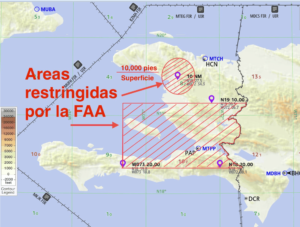The International Day for Biological Diversity is celebrated on May 22 every year.
It was decreed by the United Nations (UN), with the aim of raising awareness about the importance of biodiversity for human beings and the need to care for it and preserve it for future generations.
Motto 2024 of the International Day for Biological Diversity
In 2024 the theme of the International Day for Biological Diversity is “Be part of the plan”.
Five strategies to stop biodiversity loss
:quality(85)/cloudfront-us-east-1.images.arcpublishing.com/infobae/IH3I7RUWLJDDLL5MVGKPIWCBV4.jpg 420w) “Urban green spaces provide various ecosystem benefits to society and the environment, of a physical and social nature” (Espacios Verdes BA)
“Urban green spaces provide various ecosystem benefits to society and the environment, of a physical and social nature” (Espacios Verdes BA)In its role as an organization accredited for more than a decade by the National Advisory Commission for the Conservation and Sustainable Use of Biological Diversity (Conadibio), the Environment and Natural Resources Foundation (FARN) proposed a series of goals to include in the National Biodiversity Strategy, in line with the international commitments assumed.
“These goals are fundamental to achieve coexistence in harmony with nature and thus stop the loss of biodiversity worldwide, with the aim of being able to channel nature towards its recovery for the benefit of the planet and people,” he reflected in dialogue with Infobae the person in charge of the Biodiversity area of the FARN, Ana Parellada. The five strategies are:
- Access to urban green spaces.
- Reduce species extinctions due to human activities by 80% by 2030.
- Stop the destruction of ecosystems and promote mitigation and adaptation actions
- Provide for responsible and sustainable consumption measures for society.
- Establish specific mechanisms so that companies periodically carry out an evaluation of their dependence on natural assets.
:quality(85)/cloudfront-us-east-1.images.arcpublishing.com/infobae/ZHGLPWYVBBAKDJATXDQX75EDUM.jpg 420w) Every May 22 since 2000, the International Day for Biological Diversity is commemorated (Gettyimages)
Every May 22 since 2000, the International Day for Biological Diversity is commemorated (Gettyimages)1- Access to urban green spaces
“During the last decades, the phenomenon of increasing urbanization has intensified the processes of destruction of natural habitats, causing changes in land use, the expansion of urban developments and the construction of infrastructure – Parellada analyzed -. Our country stands out for being one of the most urbanized in the world. With more than 45 million inhabitants, the proportion of Argentines who reside in urban areas amounts to 92%, a figure much higher than the global average of 54% and also above the Latin American average of 83%.
According to the expert, “urban green spaces provide various ecosystem benefits to society and the environment, of a physical and social nature.” “Therefore, it is necessary to include biodiversity provisions in cities, with goals that establish short, medium and long-term percentages on quantity, quality, extension, connectivity and levels of access to urban green spaces. This will require the provision of inclusive and participatory urban planning processes,” he emphasized.
:quality(85)/cloudfront-us-east-1.images.arcpublishing.com/infobae/N63IURUQZVEIDOPTKVMAJA73SA.jpg 420w) The exploitation of natural spaces at the current rate causes a progressive loss of biodiversity and the degradation of ecosystems (Illustrative Image Infobae)
The exploitation of natural spaces at the current rate causes a progressive loss of biodiversity and the degradation of ecosystems (Illustrative Image Infobae)2- Reduce species extinctions due to human activities by 80% by 2030
From FARN they consider that the species loss It constitutes an irreversible process, so it is imperative to stop the accelerated decline in biodiversity and reverse this trend, setting ambitious goals for 2030 in the National Strategy that guarantee the recovery of the species.
To do this, in Parellada’s view, “it is necessary to identify threatened species through evaluations and updated red lists, as well as develop participatory management, recovery and conservation plans with adequate financing.”
In that sense, according to the red list of threatened species of the International Union for Conservation of Nature (IUCN), there are more than 44,000 threatened species, which represents that 28% of the total species evaluated so far are threatened with extinction.
3- Stop the destruction of ecosystems and promote mitigation and adaptation actions
There are numerous studies and reports that indicate the importance of ecosystems such as native forests, wetlands, grasslands and oceans, among others, for climate action.
:quality(85)/cloudfront-us-east-1.images.arcpublishing.com/infobae/ZJMNFJRGN5F3VDJE7A2KGZQETY.jpg 420w) The effects of climate change are considered one of the triggering factors that drive the loss of biodiversity in the world (Illustrative Image Infobae)
The effects of climate change are considered one of the triggering factors that drive the loss of biodiversity in the world (Illustrative Image Infobae)However, experts observe that their degradation and destruction not only have detrimental effects on the species that depend on them, but also with respect to the climate problem. In this sense, “the protection of carbon-rich ecosystems (native forests, wetlands and oceans) must be prioritized; it is especially necessary to establish both a national goal of zero deforestation and increase financing for the conservation of native forests,” Parellada analyzed. , for whom “the urgent sanction and implementation of a minimum budget law for wetland protection is also suggested.”
4- Provide measures for responsible and sustainable consumption of society
For Parellada, “forms of more sustainable production and consumption, that respect planetary limits, promote responsible and sustainable consumption measures in society, such as through the establishment of policies, legislation and tax incentives that promote alternatives and products that are friendly to biodiversity and the environment; An example of this is agroecology.”
Likewise, it is essential for the expert “to eliminate harmful subsidies and establish incentives that benefit biodiversity, such as, for example, state resources that are allocated to Law 25,080 on Investments for Cultivated Forests, which should be redirected to the National Fund for Native Forests, especially considering that the Native Forests Law suffers from a systematic lack of financing since its enactment.”
:quality(85)/cloudfront-us-east-1.images.arcpublishing.com/infobae/L6MRWXCR45C4ZLI44Y7LZMCUNU.jpg 420w) The exploitation of natural spaces at the current rate causes a progressive loss of biodiversity and the degradation of ecosystems. (Illustrative Image Infobae)
The exploitation of natural spaces at the current rate causes a progressive loss of biodiversity and the degradation of ecosystems. (Illustrative Image Infobae)5- Establish concrete mechanisms for companies to carry out an evaluation of their dependence on natural assets
It is important to “identify the impacts and risks generated by the energy, mining, agricultural and fishing companiesamong others, in biodiversity from its use and the functioning of the sector per se.”
“On the other hand, and in line with the Escazú Agreement, ensure public access to this information – Parellada said -. This should be accompanied by objectives of improvements in the regulation of companies and financial institutions to prevent harmful activities on biodiversity and the full enjoyment of human rights.”
“It is urgent to save the yaguareté of the Gran Chaco”
Within the framework of the International Biodiversity Day, and in line with the actions needed to channel the recovery of nature, from Greenpeace next to Yaguareté Project (CeIBA-Conicet) and public universities warned that “only 20 copies left of this feline in the Argentine Gran Chaco region and only 3% of the total area of the region in the Argentine province is in conditions suitable for the life of the animal.”
:quality(85)/cloudfront-us-east-1.images.arcpublishing.com/infobae/6PF6KC5ZGO6ADJQKYE2P4U3CPA.jpg 420w) In Argentina the jaguar population is estimated between 250 and 300 individuals, but the most endangered population is the one found in the Gran Chaco region (Reuters)
In Argentina the jaguar population is estimated between 250 and 300 individuals, but the most endangered population is the one found in the Gran Chaco region (Reuters)“From Greenpeace we denounce the critical situation in which the jaguar species finds itself despite having been declared a National Natural Monument (Law No. 25,463 / 2001),” he said. Hernan Giardinicoordinator of the Greenpeace Forests Campaign, who emphasized that “scientists specializing in yaguareté highlight the need to stop deforestation so that the species can survive in the Chaco region.”
In that sense, the Argentine Society for the Study of Mammals (Sarem) categorized the species as “critically endangered (CR)”, because they suspect “an 80% reduction in its population in the last 20 years, since the main threats to the species have remained or increased” .
“If we want to save this emblematic species and what it means for biodiversity, we must protect the forests and end deforestation,” they warned. We are on the verge of losing it and every action taken to prevent its disappearance is important, but we all know that without forests, it will not be possible.”
In order to survive, each animal needs approximately 40 thousand hectares of continuous forest in good condition. Despite legal efforts, the loss of its original habitat in the country has led to it being confined to an alarming 5% of its original surface in the last 200 years. Globally, scientists estimate that jaguars occupy less than 50% of their ancestral territory.
Source: Infoabae





